COOKING GREENS
As we’ve become more health-conscious, we’ve discovered that these super-nutritious vegetables are delicious, and we’ve found ways of preparing them that makes everyone—at least most people—love them.
We receive some kind of leafy green almost every week, from spring to fall. On this page, we cover greens that are usually cooked (click here for salad greens). Some cooking greens can be eaten raw, especially when they’re young and tender, but most are thicker and tougher and cooking makes them taste better.
The varieties covered here belong to several plant families: kale, collards, turnip greens, kohlrabi greens, mustard greens, mizuna, radish greens, and broccoli rabe belong to the brassica family (home of broccoli, cauliflower, and cabbage); Swiss chard and beet greens, spinach, and callaloo are all cousins in the amaranth family. Escarole, which is closely related to endive and belongs in the chicory family, is usually cooked to reduce its bitterness rather than eaten raw.
Varieties in Your Share

Amaranth
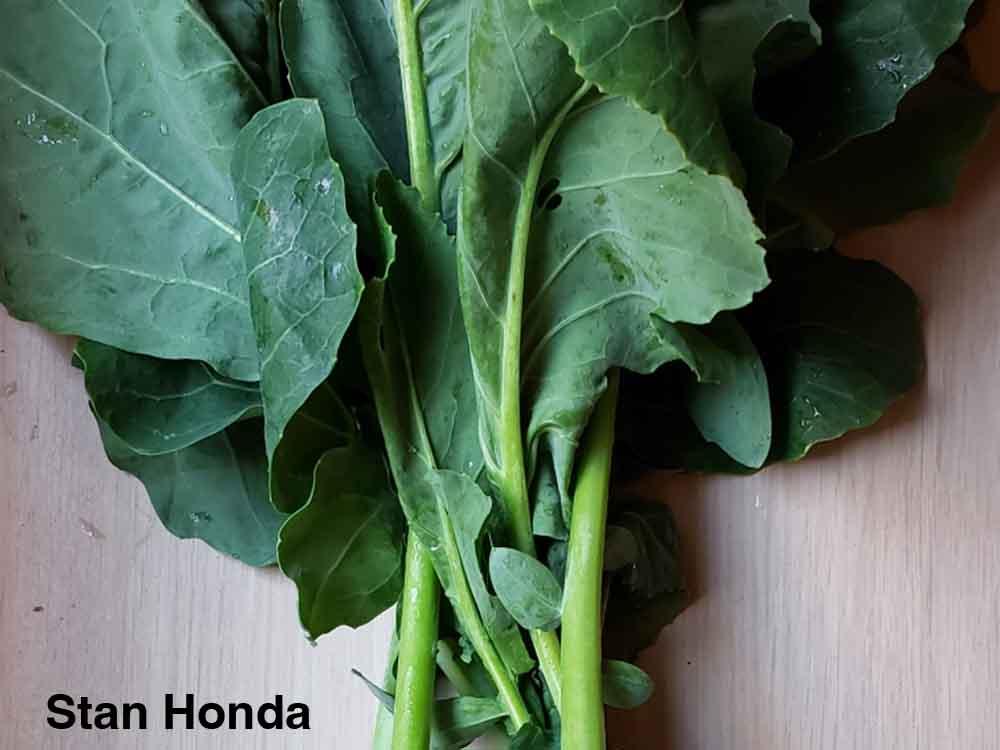
Kohlrabi Greens

Lacinato Kale

Radish Greens

Beet Greens

Mizuna

Red Russian Kale
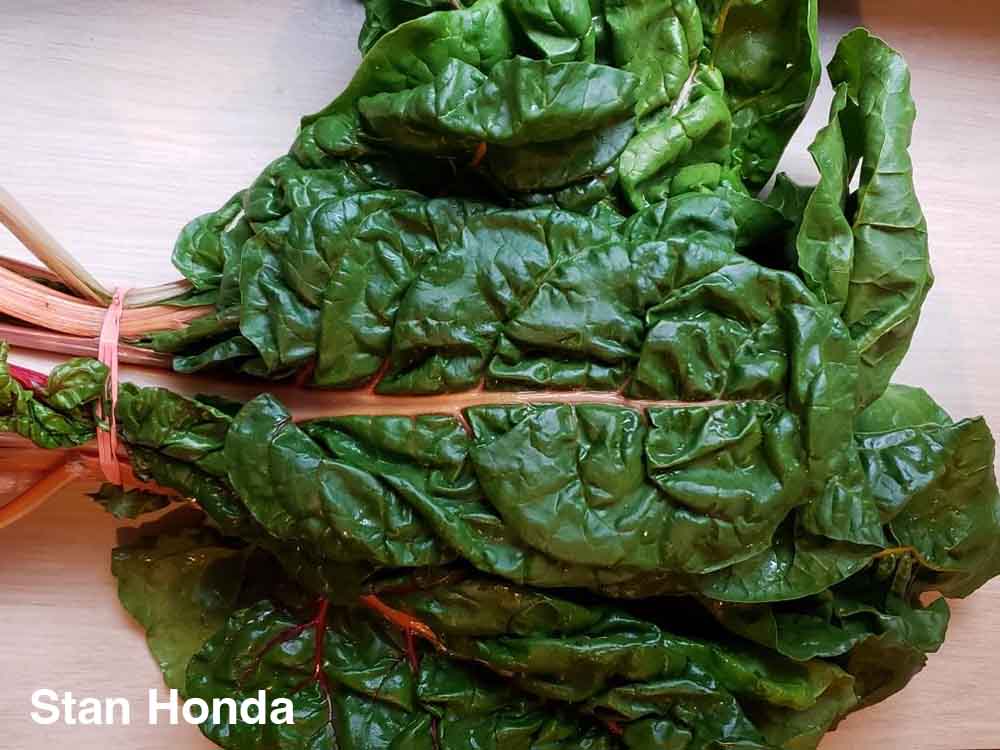
Rainbow Swiss Chard
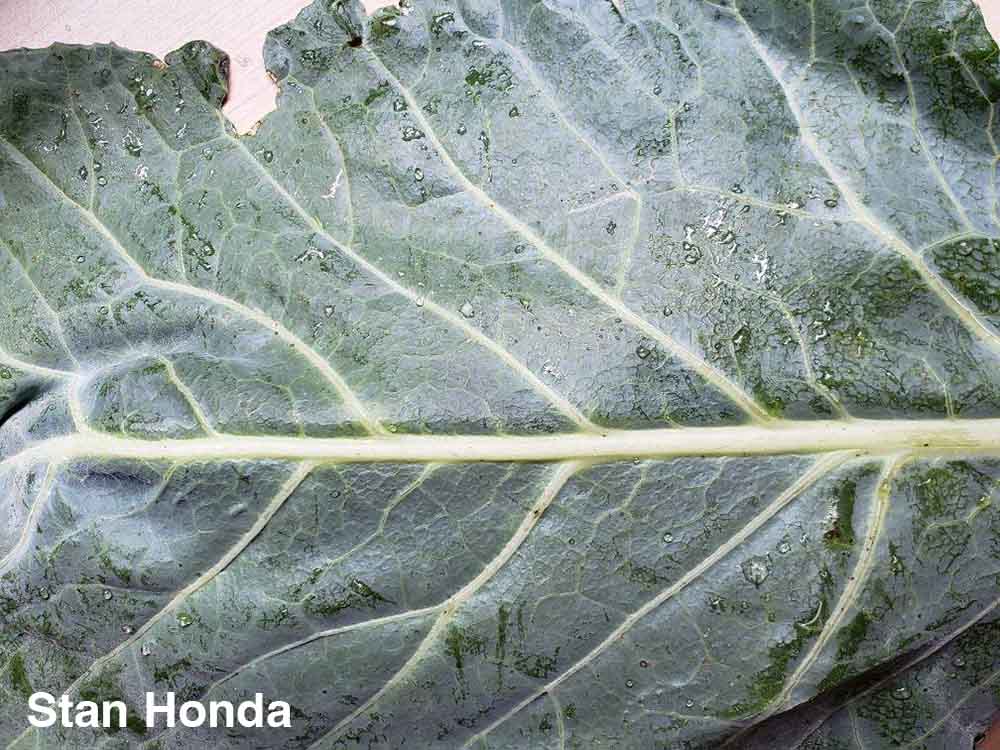
Collard Greens
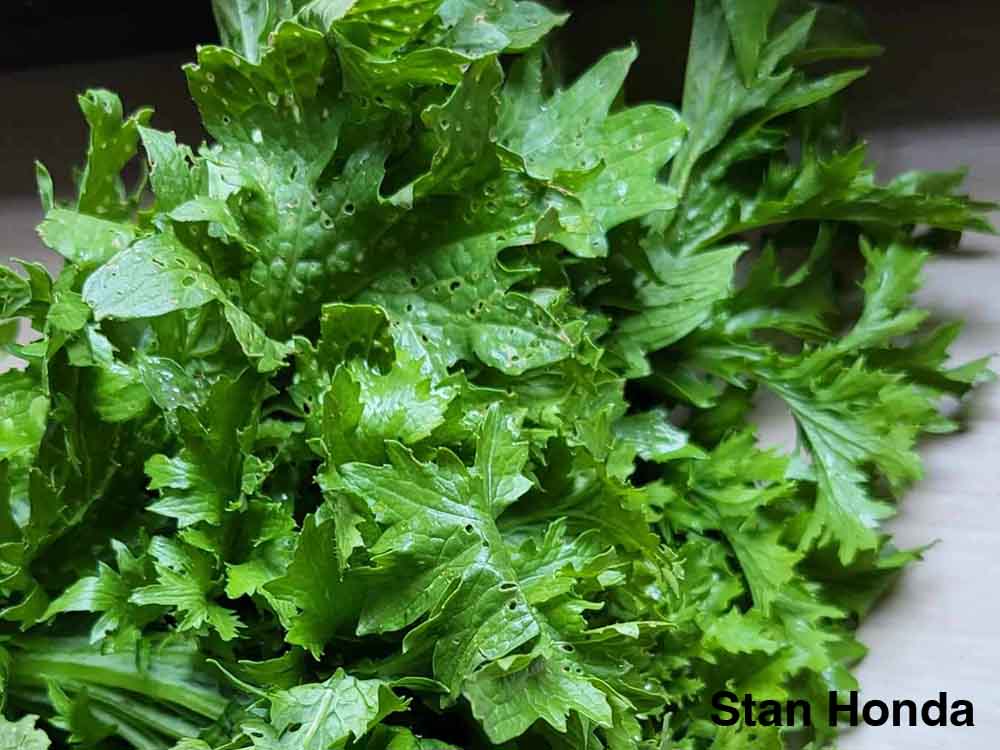
Mustard Greens
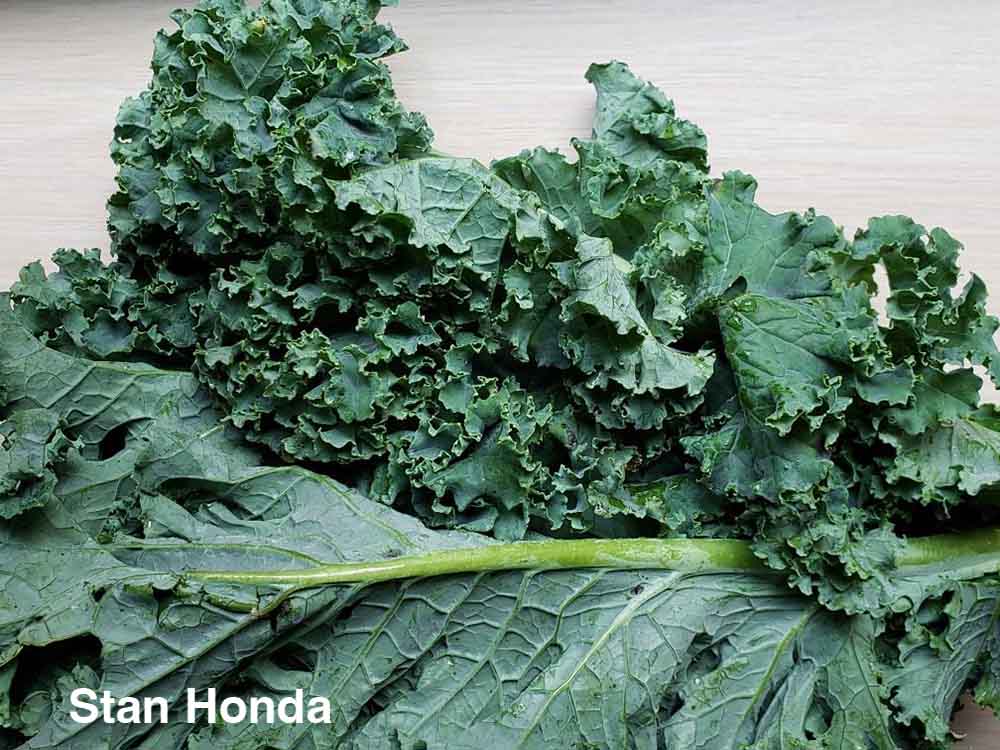
Curly Kale
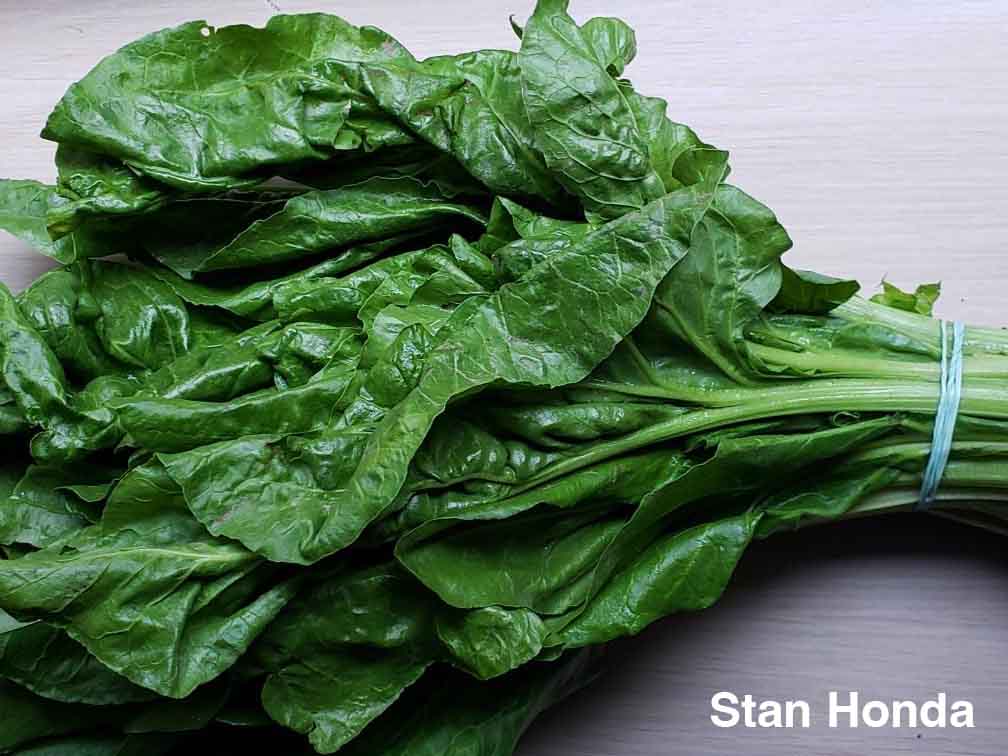
Spinach
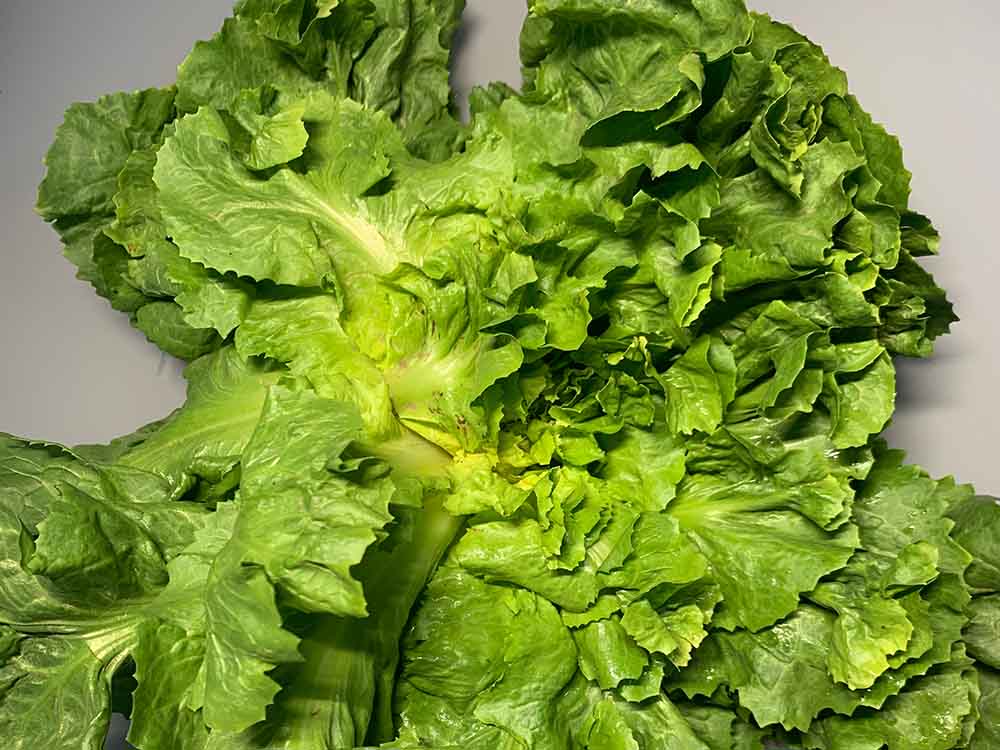
Escarole
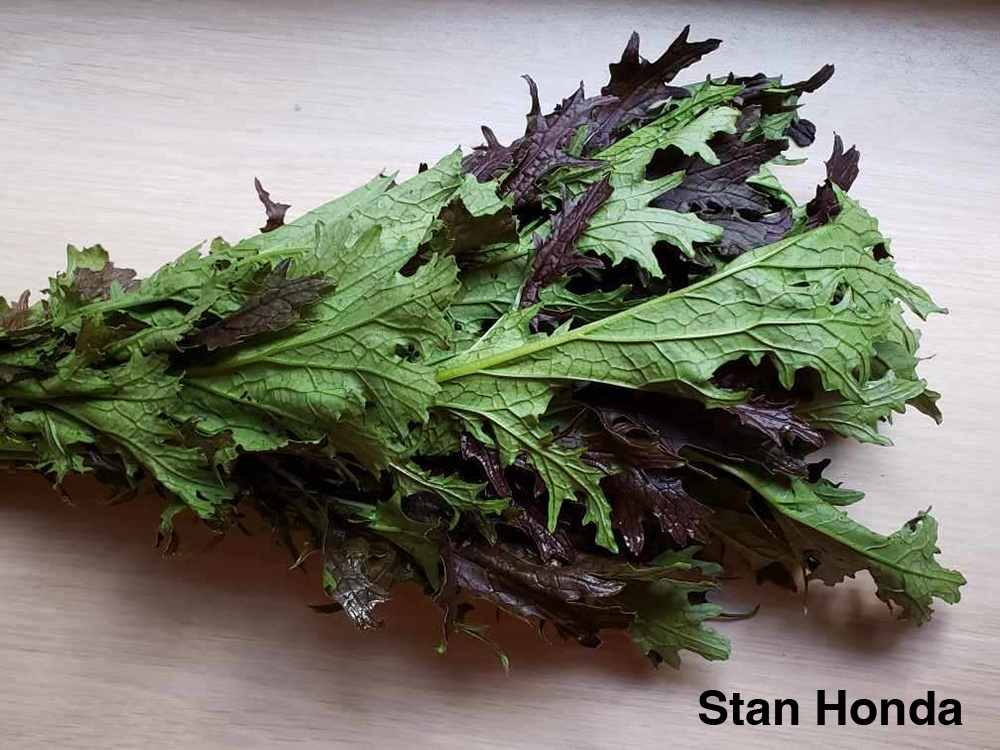
Red Mustard Greens
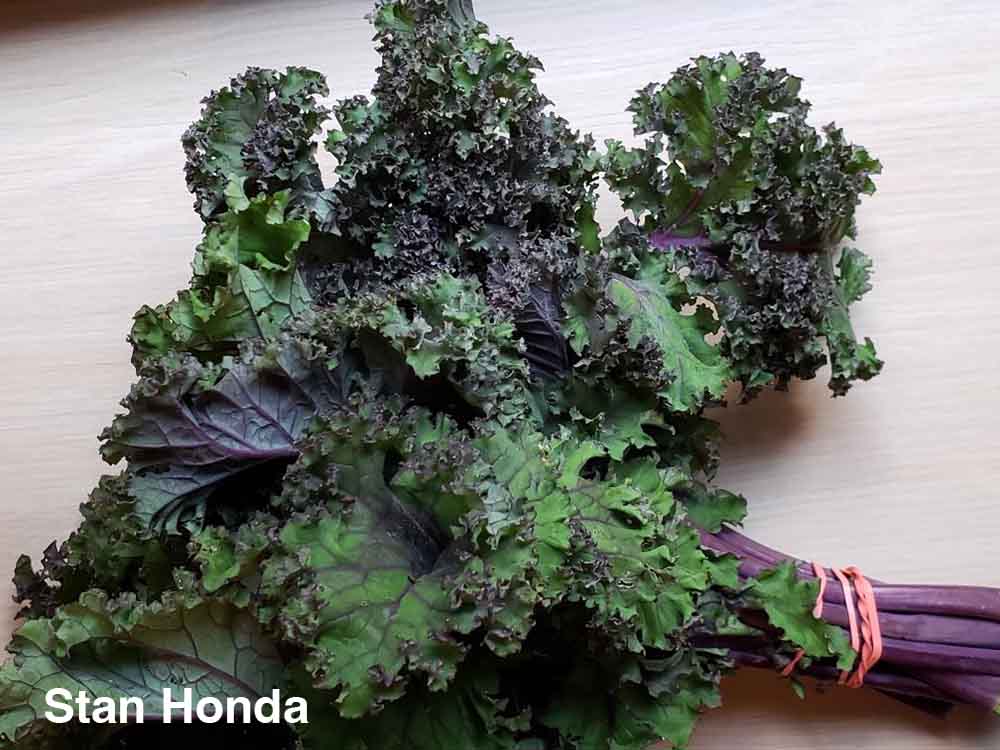
Red Curly Kale
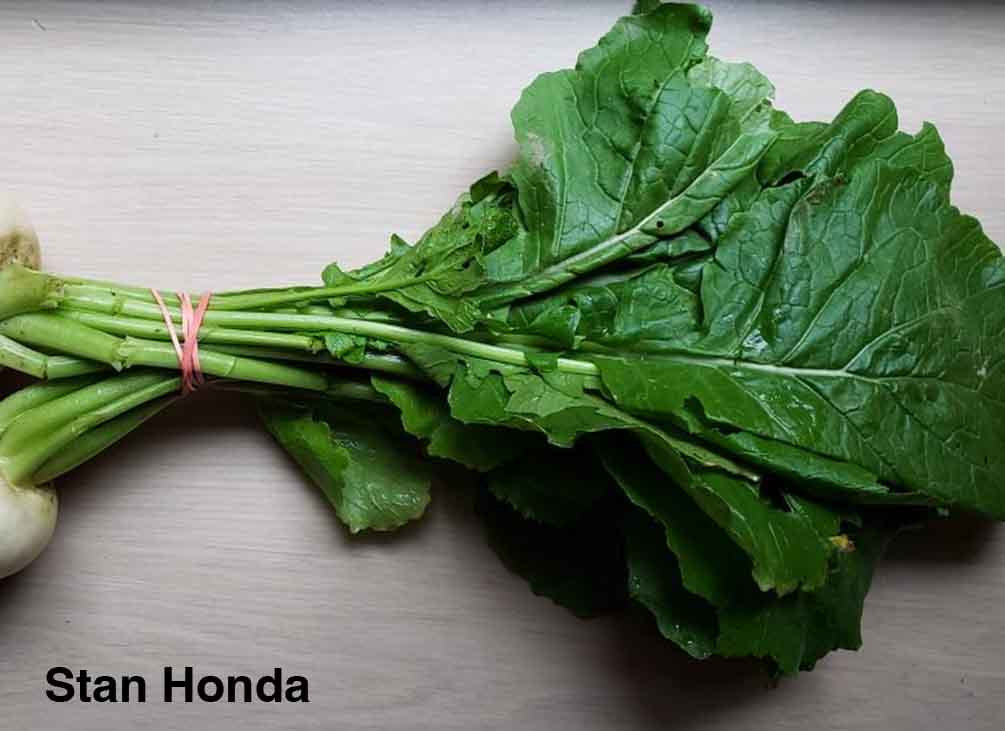
Turnip Greens
Storing: Store greens, unwashed, in plastic bags in the crisper drawer. If your fridge is dry, wrap a damp towel around the greens before putting them in the bag. If possible, use within a week; for flimsier types, like radish greens and mizuna, use them as soon as possible. All vegetables lose nutrients as they age, and it’s best to take advantage of our super fresh CSA produce and eat it when it’s at its peak. But many greens, especially the heavier ones, are still quite good after a week if stored properly.
Preserving: If you know that you won’t be using your greens for a while, you can freeze them. Freezing preserves nutrients, although it reduces crispness. You will need to blanch the greens first, which will help them retain their color, flavor, and nutrition, and prevent spoilage.
Freezing: Wash thoroughly. Tear large leaves as desired. Small leaves can be frozen whole. Prepare a pot of ice water before you begin blanching. Blanch in small quantities; blanch 4 cups of tightly packed greens per gallon of boiling water. Start counting blanching time when water returns to boil.
- For thicker greens like collard greens and kale, blanch for 3 minutes. For most other greens, blanch for 2 minutes. For very tender leaves like young spinach, baby kale, and radish greens, blanch for 90 seconds.
- After blanching, immediately remove the leaves and plunge them into ice water. Cool the greens for the same amount of time as they were blanched. Drain well and let them dry for a few minutes. Then pack in freezer bags. Press down on the bag to remove as much air and water as possible, and seal.
- Label the bags with date and contents (you may think you’ll remember; trust me, you won’t).
Tip: Leave a tiny part of the freezer bag unsealed. Insert a straw and suck out as much air as possible. This will help the bag take up less space in the freezer, and the leaves will not be damaged by ice crystals.
Pack in quantities that you’re like to use in recipes. You can pack a few different kinds of greens in one bag.
Fermenting: In addition to freezing, greens can be fermented (preserved in salt) as kimchee. [link underlined to Kimchee recipe – may need to leave as a placeholder for now since I don’t think that section is done]
Each green has its own taste and many varieties have become associated with specific dishes. Spinach is often used in raw salads but is also popular steamed, creamed, and sautéed; kale is known for chips and smoothies; collards are the go-to green for Southern stews and braises; mizuna is a favorite is Asian dishes. But many greens can be used interchangeably, though the thicker ones take a bit longer to cook and each green will impart its own taste. If you have a recipe for Swiss chard, in many cases you can substitute spinach or mustard greens and the recipe will still work.
There are so many great ways to use greens that it’s hard to list them all. Once cooked, they can become fillings for omelets, quiches, and all kinds of wrappers—ravioli, bourekas, phyllo cigars. Greens can be added to soups and stews for a nutrient boost; add a handful of chopped leaves to just about any soup or stew in the last 5 to 10 minutes of cooking. They can be mixed with protein (cheese, meat, tofu, beans) in main dishes. And there are dozens of ways to turn them into delicious appetizers and side dishes.
Washing: Greens, especially types that have crinkly leaves like Swiss chard and kale, have lots of places for soil and critters to cling to. Wash it when you’re ready to use it. Pull apart the bunch and remove yellowed leaves, then put the rest in a colander and rinse under a sprayer or under running water. Wash again, look for bugs, and feel around for any remaining dirt.
Some cooks soak greens in large bowls of water with a pinch of salt mixed in.
Removing the ribs: To tear large leaves with heavy ribs (chard, kale, collards), fold the leaves in half and cut or tear out the ribs. Don’t throw away the ribs or stems; there’s info below about how to use them.
Root/bulb vegetable greens such as beet, radish, turnip, and kohlrabi greens: Trim them from the root before washing, leaving about 1 to 2 inches of stem attached to the root vegetable. Store the root separately from the greens, in a plastic bag with holes in it, in the refrigerator.
Remember: Vegetables lose nutrients as they are cooked; choosing a method with less cooking time preserves vitamins and other nutrients.
Massaging: Tougher leaves benefit from a simple massage if you are going to eat them raw. Like humans, kale, collards, and other tough greens become less bitter and more tender after a massage. To massage, wash greens and cut into bite-size pieces. Put them into a big bowl and add ½ teaspoon oil. Some people say salt makes the process go faster but it’s not necessary. Put your clean hands into the bowl and rub the leaves with your fingers, touching as many as you can, for 2 or 3 minutes. After a minute or so the greens will start to soften. Massaged greens are much easier to eat raw.
Steaming: One of the easiest ways to prepare greens—and preserve their nutrients—is steaming. Put torn leaves into a steamer basket and place in a big pot with a few inches of boiling water at the bottom. Cover and keep the water boiling for 2 to 5 minutes—2 minutes for tender greens such as mizuna, 5 for mature kale and collards. When they’re tender-crisp, run them under cool water and add seasonings
Microwaving: Separate and chop your greens into large pieces. Wash thoroughly. Drain but don’t dry. Place in a covered, microwave-safe bowl. Microwave on high for 3-4 minutes, then stir and microwave for another 4 minutes. If the greens are thick or have thick stems, microwave for another minute or two. Spinach might be done in 2 minutes; kale might take 10-12 minutes.
Sautéing/Stir-Frying: Another quick way to prepare greens is to sauté or stir-fry in hot oil for a few minutes. Heat the oil in a heavy pot, add torn greens, and toss until they’re wilted. (Btw, sautéing and stir-frying are quite similar; technically, the heat should be higher and the tossing should be faster when you stir-fry.)
Braising: After you’ve sautéed/stir-fried for a few minutes, add water, broth, wine, juice, or stock and continue cooking for 10 to 12 minutes, until very soft. For added flavor, sauté some chopped garlic and/or onion in the hot oil before you sauté the greens.
RECIPES
Spinach, Amaranth, Chard & Beet Greens
- Sautéed spinach with garlic & sesame
- Sautéed garlic scapes with crispy tofu
- Spinach-mushroom ravioli
- Trinidadian callaloo
- Jamaican callaloo
- Yummy sautéed chard
- Swiss chard and ricotta pie
- Swiss chard dip
- Skillet mushrooms & chard with grains
- Beet green soup
- Chilled borscht (chłodnik)
- Swiss chard, goat cheese, and quinoa salad
Kale, Collards & Kohlrabi Greens
- Lemon-garlic kale salad
- Roasted beet and kale salad with maple candied walnuts
- Kale salad with bacon, tomatoes, and avocado
- Raw kale salad with peanut-honey dressing
- Caldo verde (Portuguese potato and kale soup with sausage)
- Kale walnut pesto
- Kale chips
- Southern collard greens
- Kickin’ collard greens
- Coconut-braised collard greens
- Citrus collards with raisins
- Kohlrabi einbrenn
- Kohlrabi, lentil and grain curried salad
- Vegetarian kohlrabi curry
MISC
Leafy greens are the holy grail when it comes to nutrition; they’re packed with all kinds of vitamins and minerals, are low in calories and carbs, and have negligible amounts of fat. Generally speaking, most cooking greens have a glycemic index of about 32 and tend to be excellent sources of Vitamin K, as well Vitamins C & A and manganese—but each variety has its own set of nutrients.
Keep in mind, since long cooking reduces nutrients, faster cooking methods are best in terms of nutrition, and more tender greens like spinach and young kale can be eaten raw. Cooking the greens shrinks them down considerably, so you can eat more.
Kale is abundant in Vitamin K—one cup of cooked kale contains 411% of the daily value (DV)—and is rich in manganese (28% DV) and Vitamin C (23%), and contains Vitamins A & E, folate, calcium, riboflavin, and 5 g dietary fiber. Eaten raw, kale is a good source of Vitamin K (68% in one cup) and Vitamin C (22%), and there is evidence that cooking can degrade some of kale’s antioxidant and anti-inflammatory properties.
Collard greens contain a whopping 644% of Vitamin K in one cup (cooked) and are an excellent source of Vitamin A (80%), Vitamin C (38%), manganese (42%), and calcium (21%). They also provide riboflavin, Vitamins B6 & E, choline, iron, copper, along with 8 g dietary fiber and 5 g protein.
Mustard greens are also an excellent source of Vitamin K (692% in one cup cooked mustard greens), Vitamin A (96%), Vitamin C (39%) and copper (23%), and a good source of Vitamin E, manganese, and calcium. They contain 3 g dietary fiber.
Spinach is a nutritional powerhouse. One cup cooked spinach provides 741% Vitamin K and is high in Vitamin A (105%), B Vitamins (66% folate/B9, 33% riboflavin/B2, 26% Vitamin B6), Vitamin E (25%), Vitamin C (20%); manganese (73%), magnesium (37%), iron (36%), copper (35%); and also contains calcium, potassium, thiamine (B1), and zinc. It provides 5 g protein and 4 g dietary fiber. There is evidence that when spinach is cooked, the body absorbs more iron and calcium, as cooking removed oxalate (a compound which blocks their absorption).
Swiss chard and beet greens have similar nutritional profiles. Like other cooking greens, they contain high amounts of Vitamin K per cooked cup of greens (477% for chard and 581% for beet greens) and Vitamin A (60% and 61%, respectively). They are both also rich in Vitamin C (35% and 40%), copper (32% and 40%), magnesium (36% and 23%), manganese (25% and 32%), potassium (20% and 28%), and contain 4 g fiber. Additionally, chard is high in Vitamin E (22%) and iron (22%) and is a good source of riboflavin (B2); beet greens are rich in riboflavin (32%) and provide Vitamin E, iron, calcium, thiamine (B1), and Vitamin B6.
Turnip greens contain 442% Vitamin K in one cup cooked greens and are an excellent source of Vitamin A (61%), Vitamin C (44%), folate/B9 (43%), copper (40%), and manganese (21%). Turnip greens are also a good source of Vitamins E and B6, and calcium, and contain 5 g fiber.
Amaranth greens are also very high in Vitamin K*, Vitamin C (60% in one cup cooked amaranth greens), Vitamin A (20%), manganese (50%), copper (23%), calcium (21%) and provide folate (B9), potassium, iron, magnesium, riboflavin (B2), and Vitamin B6.
Escarole is an excellent source of Vitamin K (265% in one cup cooked escarole), folate/B9 (29%), pantothenic acid/B5 (25%), and manganese (25%), and contain Vitamin A and copper, and 4 g fiber.
Broccoli rabe is rich in Vitamin K (311% in one cup cooked rabe), Vitamin C (60%), Vitamin A (37%), Vitamin E (25%), manganese (24%), and B Vitamins—including 26% folate/B9 and 21% thiamine/B1, and also contains Vitamin B6, niacin/B3, riboflavin/B2, and pantothenic acid/B5. Additionally broccoli rabe provides calcium, copper, potassium, iron, as well as 6 g protein and 4 g fiber.
* The exact Vitamin K content for cooked amaranth greens is not available from the USDA FoodCentral database, but these greens are known for having one of the highest concentrations of Vitamin K among leafy vegetables. Dietary fiber, Vitamin E, and choline are also excluded from the report.
A rotating array of greens fills our shares from the first week of the season to the last; we get cooking greens almost every week. Our farmers grow more than a dozen kinds of greens, so that members can experiment and enjoy new and different varieties every week. Among the greens in our shares:
Members of the Brassica/Cabbage Family
Kale can have different flavors depending on what time of year it is harvested. It is mild in spring and early summer, then begins to develop a bitter flavor as the weather warms—and is most delicious and sweet after a frost. Some of the varieties we receive are tooth-edged Red and White Russian, black Lacinato (aka Dinosaur Kale), and Curly Kale. Kale is very hardy and is available throughout the entire Northeast growing season. Peak harvest times are in the early summer and in the fall and winter months.
Mustard greens are especially popular in the Southern United States. Mustard greens taste similar to a spicy radish. In the Northeast, they are available during the warm weather season, from July to October. We receive several types, including frilly green Wasabina and a red-tinged variety with small leaves that is similar to mizuna. Mizuna, which is also a mustard green variety, has smooth, yellow-green, feathery leaves.
Collard greens have a long growing season; they are planted in the spring and take most of the summer to mature. Collards taste best after a frost, and we usually receive them late in the season.
All parts of the turnip plant are edible: leaf, stem, and root. Turnips, including their greens, like cool weather and are harvested in the Northeast in the spring and fall months.
Broccoli rabe, also called broccoli raab and rapa, is more closely related to turnips than to broccoli. It has flat, serrated leaves that look and taste like mustard greens. The plants sometimes develop small flower buds that look like broccoli. We see this green in our shares once every few years.
Amaranth family
Swiss chard is a type of beet grown for its leaves rather than for its root. There are several varieties of Swiss chard: red, green, and even rainbow (with red, yellow, and green stalks on the same plant!). Chard, like many other greens, is available in the Northeast in the spring and fall. And while beets were bred for their roots and not for their leaves, beet greens are also nutritious and delicious—don’t throw them away.
Spinach, the source of Popeye’s superhuman strength, is packed with minerals and vitamins. It’s another cool-weather crop. Most varieties are available in early spring and late fall, but a few have been bred to withstand heat; these are called summer spinach and arrive in our shares in midsummer. Spinach comes with crinkly “savoyed” leaves or with flat, straight-edged leaves.
Chicory family
Escarole is a bitter green believed to have been first cultivated in Italy and Belgium in the 16th century. Escarole has slightly curved pale green leaves and a milder flavor than some of the other members of this family. Chicories are in season in the Northeast from June through October.
Most greens are cool-weather crops; we see them in our early spring shares and then again in the fall. There are a few varieties that withstand heat, especially Swiss chard and callaloo. Some varieties of kale and summer spinach also can be harvested in July and August. Most greens require lots of water.
Greens that are harvested in the fall have thicker leaves. Many improve after a frost: when the plant comes close to freezing, the water in its stems freezes too and the plant becomes distressed. To fight this, the plants produce more sugar, which allows them to tolerate colder temperatures and makes them taste sweeter.
CONTRIBUTOR

Special thanks to Lauren from the Stamford CSA for her contributions to this article!

